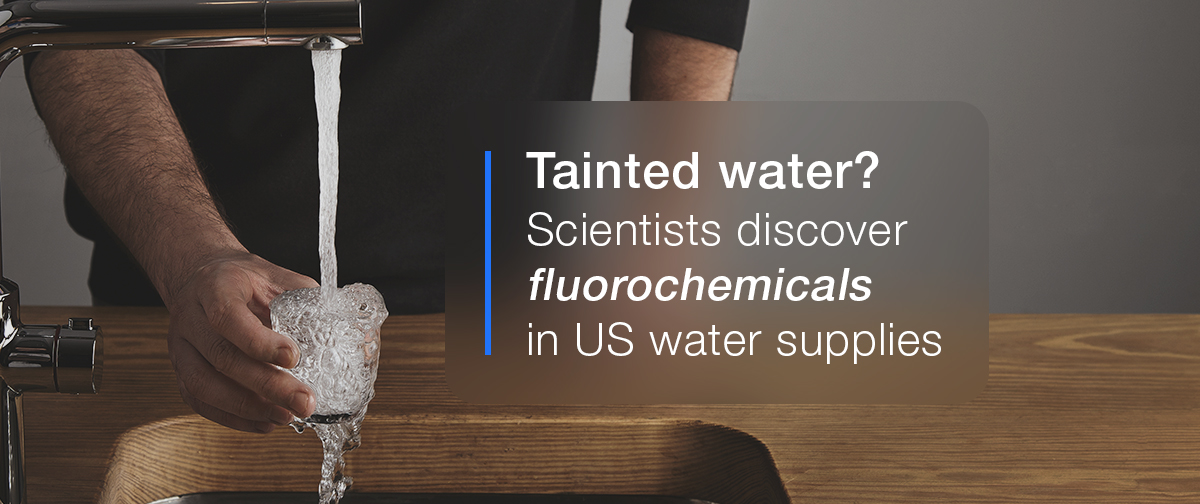Posted by Sherijan Ivan Dela Cruz on May 13th 2021
Tainted water? Scientists discover fluorochemicals in US water supplies

Learn the health risks of fluorochemical contamination.
Scientists at Bloomberg Environment, through an extensive analysis of EPA water contaminant data, have discovered that 65 water utilities across 24 states and territories have at least one sample that came back with an abnormally high concentration of fluorochemicals. These samples are above the agency’s lifetime health advisory of 70 parts per trillion for perfluorooctane sulfonate (PFOS) and perfluorooctanoic acid (PFOA) – two among thousands of fluorochemicals that may have been contaminating a significant portion of the US water system.
Who are at risk?
The drinking water facilities analyzed by Bloomberg serve more than 6 million people across the continental US. University of Rhode Island Superfund Research Center director Rainer Lohmann assured that most Americans are not in danger of fluorochemical contamination. However, citizens living in the affected areas must take extreme precautionary measures as fluorochemicals are highly toxic to the human body. Federal agencies, from the municipal to the State level, have already provided bottled water and began water treatment to minimize the number of people exposed.
What is at stake?
Linda Birnbaum, former director of the National Institute of Environmental Health Sciences (NIEHS), told Bloomberg Environment that at least 3,000 varieties of fluorochemicals can be found in the environment. These chemicals have also been in use for years to make upholstery materials, waterproof apparel and footwear, and grease-resistant food packagings such as pizza boxes, popcorn bags, and burger wrappers.
What makes them dangerous to human health? Fluorochemicals don’t easily degrade in the environment, and the number of scientific studies proving that PFOS and PFOA cause health problems in humans and animals are growing, Birnbaum affirmed.
The biggest sources of contamination, according to the NIEHS, are training and firefighting sites where aqueous film-forming foam is used.
People exposed to high concentrations of PFOS or PFOA have, according to the CDC, exhibited long-term symptoms and diseases such as the following:
- High cholesterol
- Colon and thyroid problems
- Testicular and kidney cancers
- Elevated blood pressure especially during pregnancy
“We don’t know a lot about the full extent of its devastating effects,” Birnbaum said, referring to other health risks that come with fluorochemical contamination.
How can you protect yourself?
The most dangerous way for people to be exposed to fluorochemicals is through drinking water, because of the way the chemicals react (and don’t degrade) in water. Next is eating contaminated fish, because of the way it concentrates in the meat. For adults, skin and respiratory contact is said to have the least risks.
Here are some ways you can protect yourself against fluorochemicals in water:
- If you’re on a municipal water supply, learn what local testing shows.
- If you’re on a well or a water source near an area of concern, contact your local health department for water testing.
- If you’re on a well or a water source far from an active investigation area, test the water yourself.
- Use caution when catching fish that you’ll eat.
- Research before you go into a lake or river.
- Ask your restaurants or diners if they have their water tested.
- Dispose of old products safely and ideally far from a body of water.
But perhaps the safest, most reliable protection you can get is to install your own water filtration system. CWR Enviro’s water filters reduce fluorochemicals to 70 ppt or below – levels recommended by the US Environmental Protection Agency on their lifetime federal health advisory. If you want to learn how safe your drinking water is, click here.

